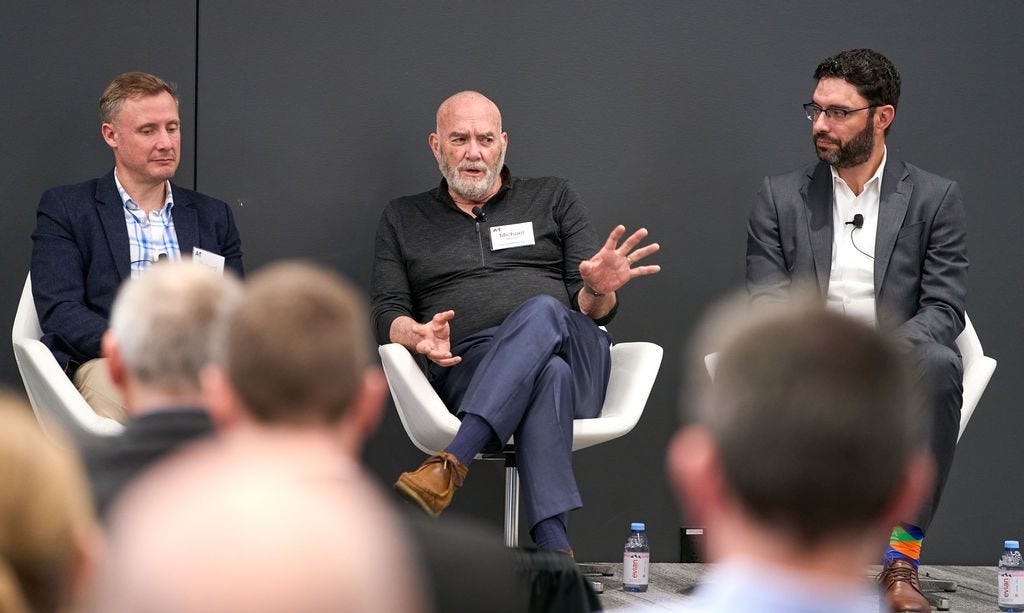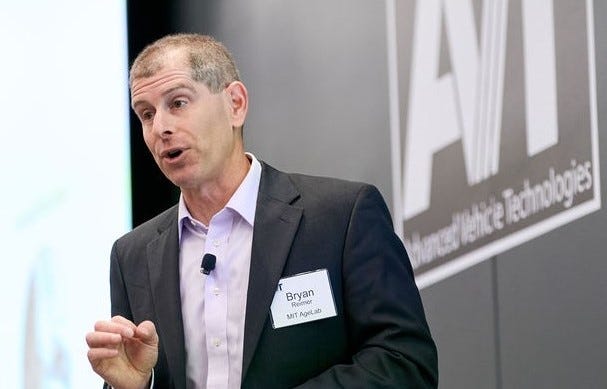ADAS: Mystery for Mechanics, Migraine for Motorists
Automakers' love affair with sensors is understandable. But have they considered designing ADAS cars for repairability and sustainability? Or what happens after the sale isn't their problems?
At a recent MIT Advanced Vehicle Technology (AVT) symposium in Cambridge, Mass., the automotive industry’s most neglected topic came into sharp focus: The repairability of sensors-laden modern vehicles.
Despite being called a “smartphone on the wheels,” a car with advanced driver-assistance systems (ADAS) features is no smartphone.
As of 2024, the average age of passenger vehicles in the United States is 14 years, according to S&P Global.
Given the reality that a car, barring accidents, can last decades, what’s being done to ensure similar longevity for ADAS vehicles, specifically in maintaining them, affordably? Who’s making sure that repaired ADAS vehicles get accurately calibrated, before going back on the road?
The automotive industry’s love affair with sensor technologies is understandable. Cameras, radars and lidars have progressed to a point where they are essential to enable ADAS in vehicles, touted for their increased safety, that have proliferated on the global market.
The after-sale issue, so far barely addressed, is whether automakers have thought seriously about keeping the life of their ADAS vehicles sustainable.
One unintended consequence of the ADAS boom is that if a car gets even a simple fender bender, the consumer could face sticker shockers in the form of a $7,500 repair bill.
In celebrating its 10th anniversary, AVT, an academic-industry collaborative consortium, recently hosted for its members a program that focused on topics rarely mentioned in most automotive conferences. Given that AVT’s key mission is to develop a data-based understanding of how drivers use and respond to various vehicle technologies, the most revealing session was a panel entitled “Advanced Vehicle Technology & Collision Repair.”
The panel of three experts included Richard Billyeald, Chief Research and Operations Officer at Thatcham Research. Mike Nelson, founder of Nelson Law. He is a trial lawyer who grew up in a body shop. Hami Ebrahimi is Chief Commercial Officer at Caliber Collision, a company with the largest vehicle repair operation in the United States
Richard Billyeald, Mike Nelson, Hami Ebrahimi (from left to right) on the “Advanced Vehicle Technology & Collision Repair” panel. (photo credit: Kelly Davidson)
ADAS vehicle repair
First, it’s important to understand that repairing ADAS vehicles is not just about parts replacement and body cosmetics. After any trip to the shop, sensors must be measured and recalibrated in steps precisely stipulated by each automaker.
They require static and/or dynamic calibrations. In static calibration, the tires remain in place but deflated either to a PSI (pounds per square inch) of 30 pounds, said Ebrahimi, on in compliance with the manufacturer’s standard tire pressure. Ebrahimi prefers dynamic calibration, but it “still requires one to drive a certain distance at a certain speed for a certain period of time.” He added, “Good luck doing that in LA, in Chicago, or in Boston when it snows” and sensors are “supposed to pick up all the lane mark recalibration.”
Very few of today’s mom-and-pop automotive body shops can fix modern cars.
“With advances in technology, the body shops are saying, ‘Don’t blame me. Blame the car manufacturers,” said Nelson Law’s Nelson. “OEMs have managed repair guidelines, and they tell you, ‘You have to do A, B, C, D.’”
“The technology in these things [inside ADAS] is phenomenal,” Ebrahimi said. Given the training, equipment, space and knowhow necessary for repair and sensor calibration, “It’s becoming almost too expensive to fix the car.”
According to industry data, said Ebrahim, more than half the cars repaired and put back on the road are not being recalibrated.
The irony is that ADAS vehicles—touted by OEMs as a quantum leap in safe driving, could end up, after one repair, with its sensors all looking the wrong way.
Nelson said, “I don’t understand why automakers don’t design the car sending off a message that says, ‘Heads up, I am not calibrated!’”
Such a recalibration alert should be a simple fix. Why not do it? Nelson said, “I’m sure automakers would tell us, ‘You don’t understand … That’s going to cost $15 and that’s our profit margin on the car.’”
The total cost of ownership
The bottom line is the ever-increasing total cost of ownership for car buyers.
Repairability should be taken into consideration when insurers decide on automotive rates. Yet, this isn’t the case in the United States.
Thatcham’s Billyeald said, “Luckily it is in the UK.”
The UK has transitioned from a conventional group rating system —which assesses vehicle risk based on 125 vehicle attributes — to a newly established ranking model with five advanced and dynamic assessments of risk. Each measure—performance, damageability, repairability, safety, and security—is scored from 1 (indicating low risk) to 99 (unsafe at any speed). The scores use real-world claims data, aggregated to provide an overall risk score. The goal is to consider multiple factors within each assessment so that the scoring system offers a comprehensive view.
Before forcing this transition, Billyeald explained, “We poked car makers quite hard.”
Needed: Three-way conversation
If the relevant players are serious about lowering the cost of car ownership, insurance companies, automakers and repair shops need to initiate a three-way conversation.
Insurance companies’ thinking about vehicle risks should influence carmakers, for example. Thatcham’s Billyeald explained that if US insurers don’t seriously consider repairability when setting rates, why should car designers care about it?
Repair shops are facing a major challenge, partly because car makers are not placing sensors in a uniform, or standardized manner. Exactly where sensors are placed on grilles or on windshields—even a few inches apart this way or that way—affects the repair.
This also applies to in-vehicle sensors that monitor drivers. The assumption that interior cameras are safe from most accidents is wrong. In reality, said Nelson, “After an accident, the interior of the car is completely disassembled for a variety of reasons.”
Given all the parts that get messed up after an accident, Nelson said, “You might think car manufacturers can do us all a favor by trying to get sensors in place as uniform as possible.” But they don’t. Nelson called such a common-sense reform “a Herculean task.”
Worse, the buck doesn’t always stop at OEMs. Some car makers just buy pieces of cars, which are assembled by third parties, Nelson explained. “Ford, for example, doesn't really manufacture a Ford. It's a middleman.”
The bottom line, noted Ebrahimi, is that “the total cost of repair needs to be part of the discussion of the ecosystem, because I don't think the path that we're on would help us.”
First, he went on “I don’t think repairability is always what's thought through during the manufacturing process.”
Second, when it comes to repair costs, “They have already gone up more than 90% over the last 12 years,” Ebrahimi said. “But not because the body shops are making money.”
Growing consumer resistance
Many car buyers prefer to turn off certain ADAS features. “Basically, consumers don't like it. They only notice these advanced features when the cars are doing something they shouldn’t be doing,” observed Billyeald.
Reportedly, more consumers are even looking to buy cars introduced just before the proliferation of ADAS bells, whistles and irritating beeps.
As car makers continue to add more technology and features, it might be time to pause for a review of consumer resistance. Billyeald said, “We need to look at better implementation of what we’ve got already and really refine them so that consumers are getting all the benefits and none of the determinants.”
Nelson agreed. “We were talking about Level 3 vehicles today. No disrespect to those folks that think about L3, but first I think we’d better get L2 right.”
Nelson isn’t being a Luddite, though. He stressed, “Automatic Emergency Braking is great. We haven't talked about backup cameras, but they are fantastic. That alone has changed the dynamic dramatically from the standpoint of loss frequency and severity,” he noted.
Back on the other hand, what about Tesla’s smart summons? “Do we really need a car that pulls itself out of a parking space? I can't tell you how many of these car accidents I'm involved in [as a trial lawyer] … I took my Tesla to a shopping center just to see what the smart summon feature actually is. My car backs out of the parking space and drives away from me, out the parking lot, as I'm standing there with my phone.”
Nelson summed up: “In the short term, the tech's too hard to use, and it's not uniform.”
Even at the most critical moment when a car demands a driver to pay attention, its messaging system is too complicated for the driver to comprehend. “On my Tesla, I get a red signal that shows up for a nanosecond, saying, ‘Help! Take over immediately.’ I'm doing 70 miles an hour on a complicated road, and I've been lulled into a false sense of security. And here I am, busy trying to read this thing in the middle screen while I'm trying to figure out how to avoid disaster.”
For Ebrahimi, his concern is the lack of sophistication and communication among car makers, insurance companies and repair shops. When he was new to the automotive industry, he was shocked to see that insurers didn’t assess whether this car, compared to another, is cheaper to repair. “Insurers just take regression of what has happened in the past and apply peanut butter and jelly.”
Since then, the insurance industry found out that with technology, accident frequency didn’t go down, while the cost of repairs shot up. “Insurers started losing a lot of money. And they asked themselves: what happened?” The inevitable result was rate increases as high as 58 percent in three years, explained Ebrahimi. This spooked consumers, some of whom have opted to self-insure.
Meanwhile, OEMs seemingly remain oblivious to all this sturm und drang. Addicted to bells and whistles regardless of their implications, they continue to think that more technology is cool.
Bryan Reimer. the founder of AVT Consorium (photo credit: Kelly Davidson)
During the keynote speech at the May event, Bryan Reimer, founder of the AVT consortium, shared the original pitch deck he created a decade ago as he was forming the consortium.
On the slide, “ADAS/Automation related questions of interest,” he listed:
What are the relative safety benefits of various ADAS and other automated driving features?
Are drivers actually using the system and how often?
Can we have a deeper understanding of drivers’ usage of technologies to optimize system development?
These questions are surprisingly still relevant.
No technology suppliers would concede this, but just because we have technologies doesn’t mean that we have to use them all.







